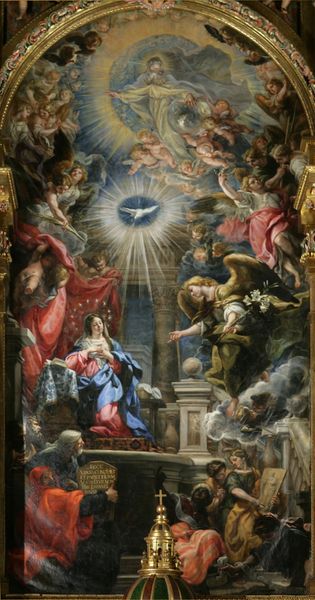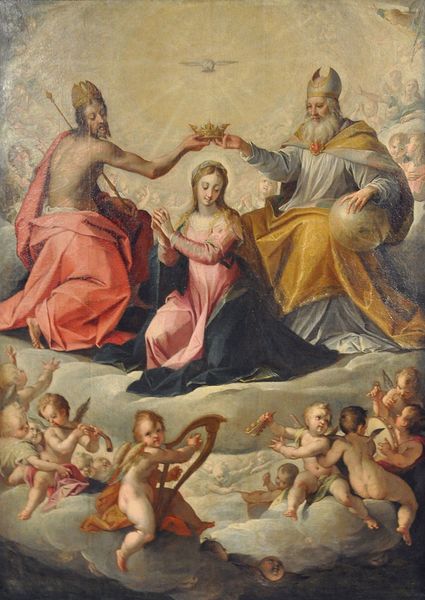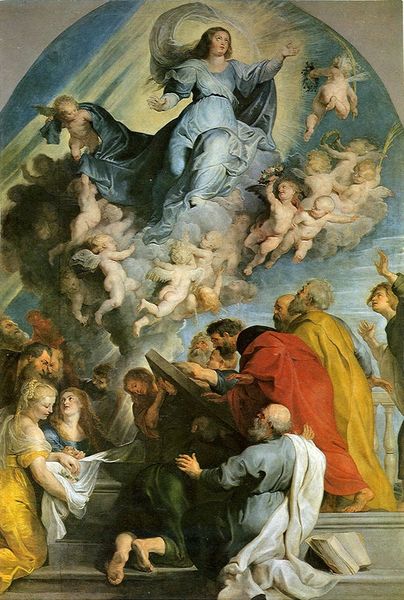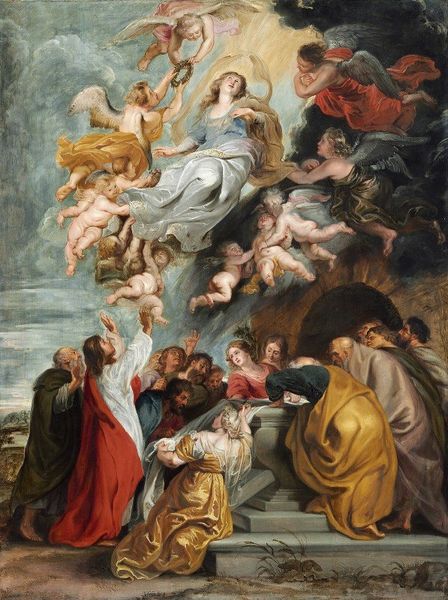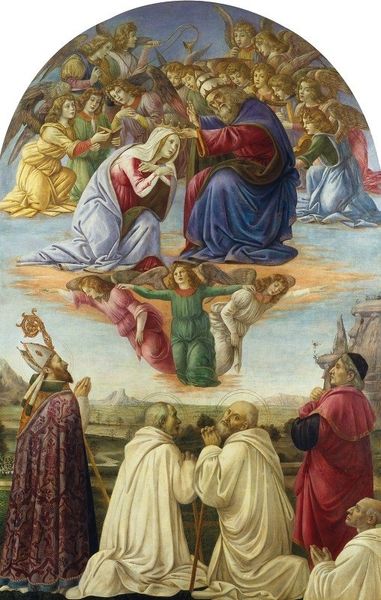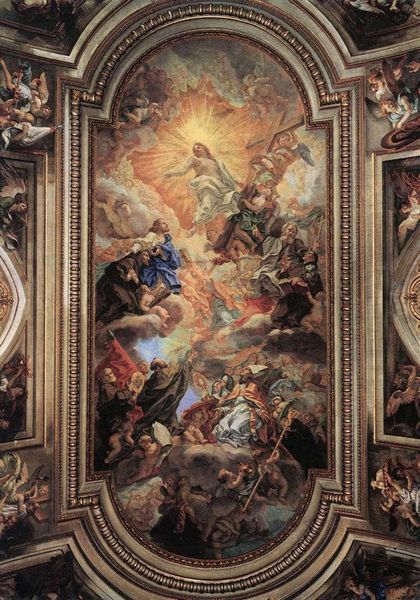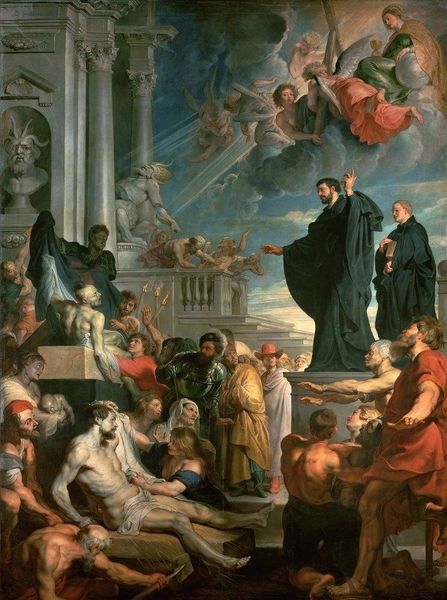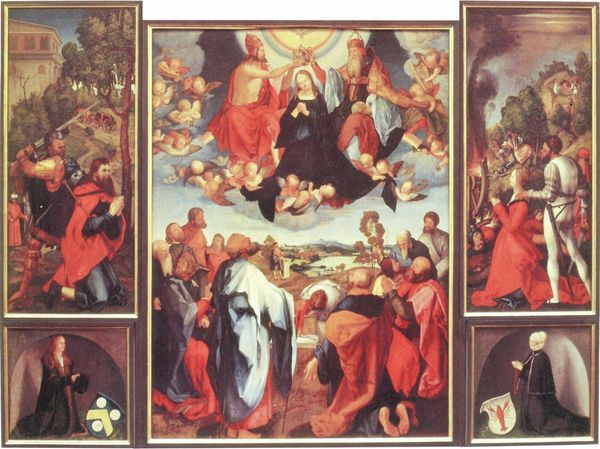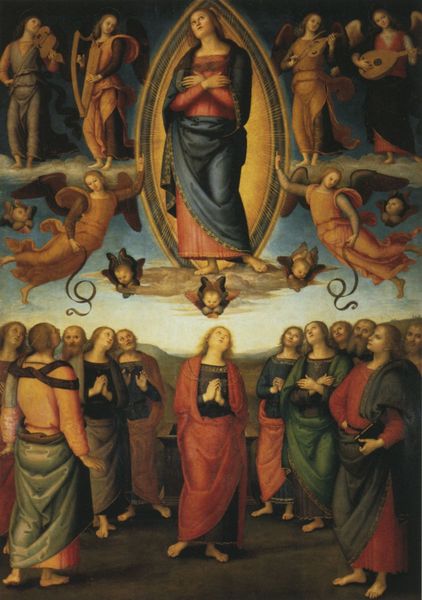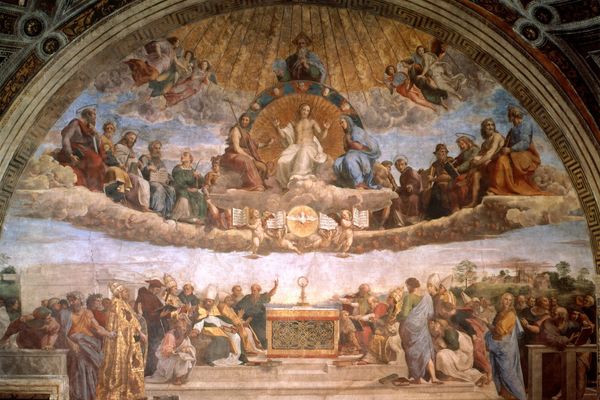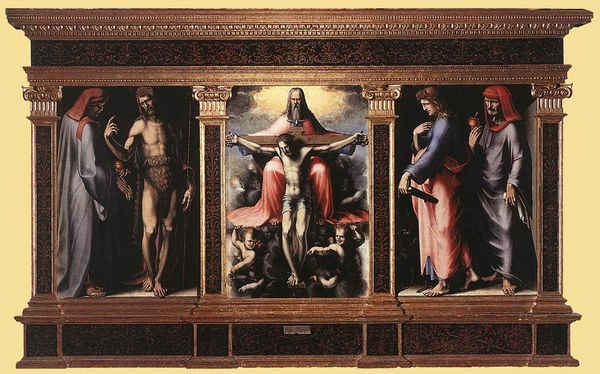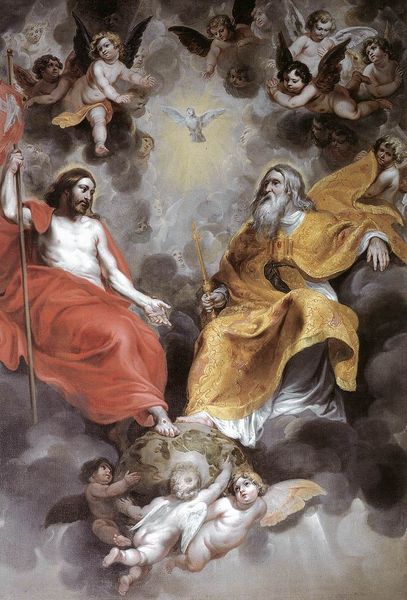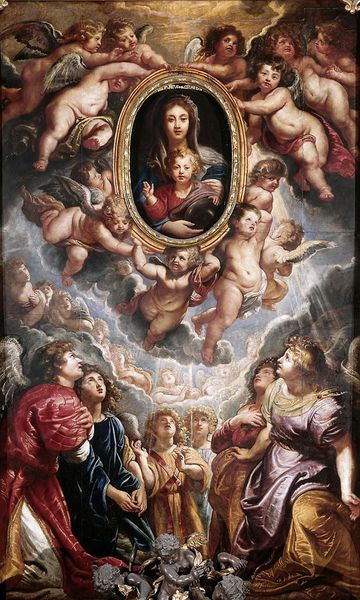
The Trinity Adored By The Duke of Mantua And His Family 1606
0:00
0:00
peterpaulrubens
Private Collection
painting, oil-paint
#
portrait
#
allegory
#
baroque
#
painting
#
oil-paint
#
figuration
#
oil painting
#
group-portraits
#
history-painting
Dimensions: 190 x 250 cm
Copyright: Public domain
Curator: Here we have Peter Paul Rubens' "The Trinity Adored by the Duke of Mantua and His Family," painted around 1606. The artwork now resides in a private collection. Editor: It's certainly grandiose. My immediate reaction is that it's a portrait, yes, but more strikingly, an assertion of power legitimized by divine endorsement. The upper register, the Trinity, feels dramatically separate from the earth-bound family. Curator: Rubens was masterfully adept at weaving complex symbolical narratives, wasn't he? Notice the clear delineation between the earthly and divine realms through composition and light. The placement of the Trinity above and the Duke and his family below is intentional, visually establishing a hierarchical relationship. But let's also note, Rubens also employed potent psychological gestures—for instance, what might the viewer have made of the Duke's upturned gaze? Editor: It could indicate humility, deference to divine authority, or even ambition veiled as piety. This kind of performative devotion often served as a social currency. Rubens situates the Duke strategically: He wants to represent authority but also suggest moral alignment to the powers of the church. How much was Rubens critiquing courtly manners, or reinforcing their structural importance to political performance? Curator: The swirling figures of angels lifting a heavy drape holding Jesus and God suggest an active and tangible divine blessing on the Duke and his lineage. Rubens' baroque style intensifies that sense of theater. The figures aren’t simply arranged; they’re dramatically posed and full of implied movement. Even the folds of fabric and clouds seem charged with kinetic energy. The Trinity hovers on a cosmic theatre stage. Editor: Yes, Rubens’ theatrical style makes you wonder if this wasn’t less about true faith and more about constructing a public image. Were these displays a sort of compensation? After all, power can be as brittle as the image projected for a dynasty. Considering some of the controversies of the period, this grandiosity might even read like defensiveness. Curator: It’s true. "The Trinity Adored" offers us insights into both the artist's unique skill and the dynamics of power during Rubens’ lifetime. A painting like this wasn't just devotional; it was political and deeply embedded within its era. Editor: Precisely. Looking closely at art history invites us to contemplate our world, too. We’re not just observers, but active interpreters and participants in a dialogue about meaning.
Comments
No comments
Be the first to comment and join the conversation on the ultimate creative platform.
